Review: Sontronics Podcast Pro
These days it seems like everybody has a podcast – but with the medium’s increasing popularity comes a desire for more high-quality recording tools. Will podcasters subscribe to Sontronics’ latest mic drop?
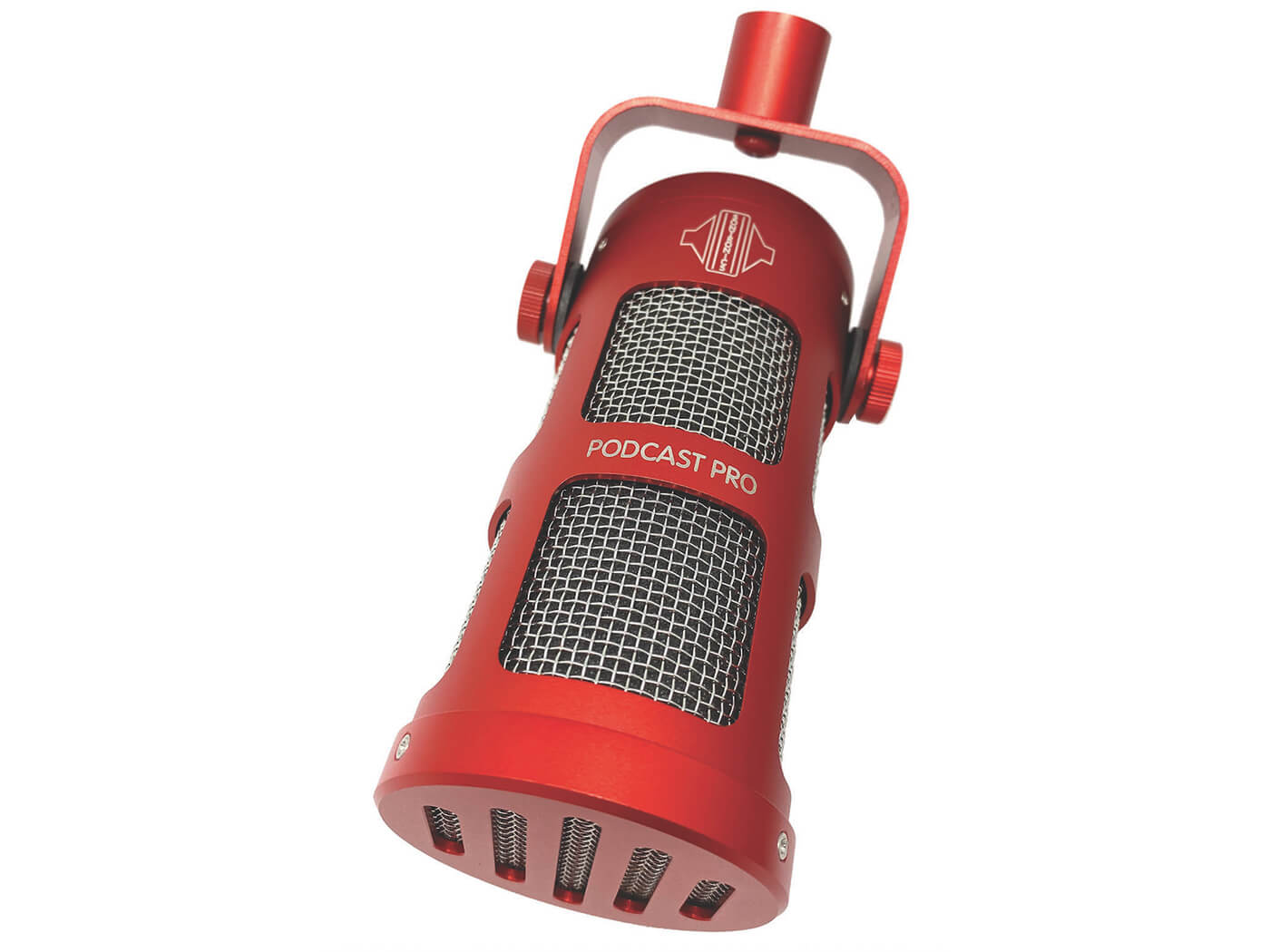
Sontronics Podcast Pro Red

Price £100
Contact Sontronics
With the rise of vlogging and podcasting, the market for vocal microphones aimed at the non-singing community has expanded rapidly in recent years. The surge has brought with it new products that enable the spoken voice to be recorded with minimum fuss and more-than-sufficient fidelity. Sontronics has forged a fantastic reputation by offering microphones for a wide range of applications at a broad range of price points.
Its new Podcast Pro microphone is available for under £100, its primary purpose to capture the spoken voice accurately, with intelligibility, sonic richness and ease of use vying for top billing in its specifications.
Go Pro
The dynamic microphone is available in black and red, and I can’t help but note how closely our red review version resembles a slimline can of Coca-Cola. The mic’s hinge features two thumbscrews that allow you to loosen and tighten its connection to your microphone stand, which allows you to angle the Podcast Pro directly at your the source signal. The XLR connection is on the bottom and, of course, as this is a dynamic microphone, no phantom power is required from your interface.
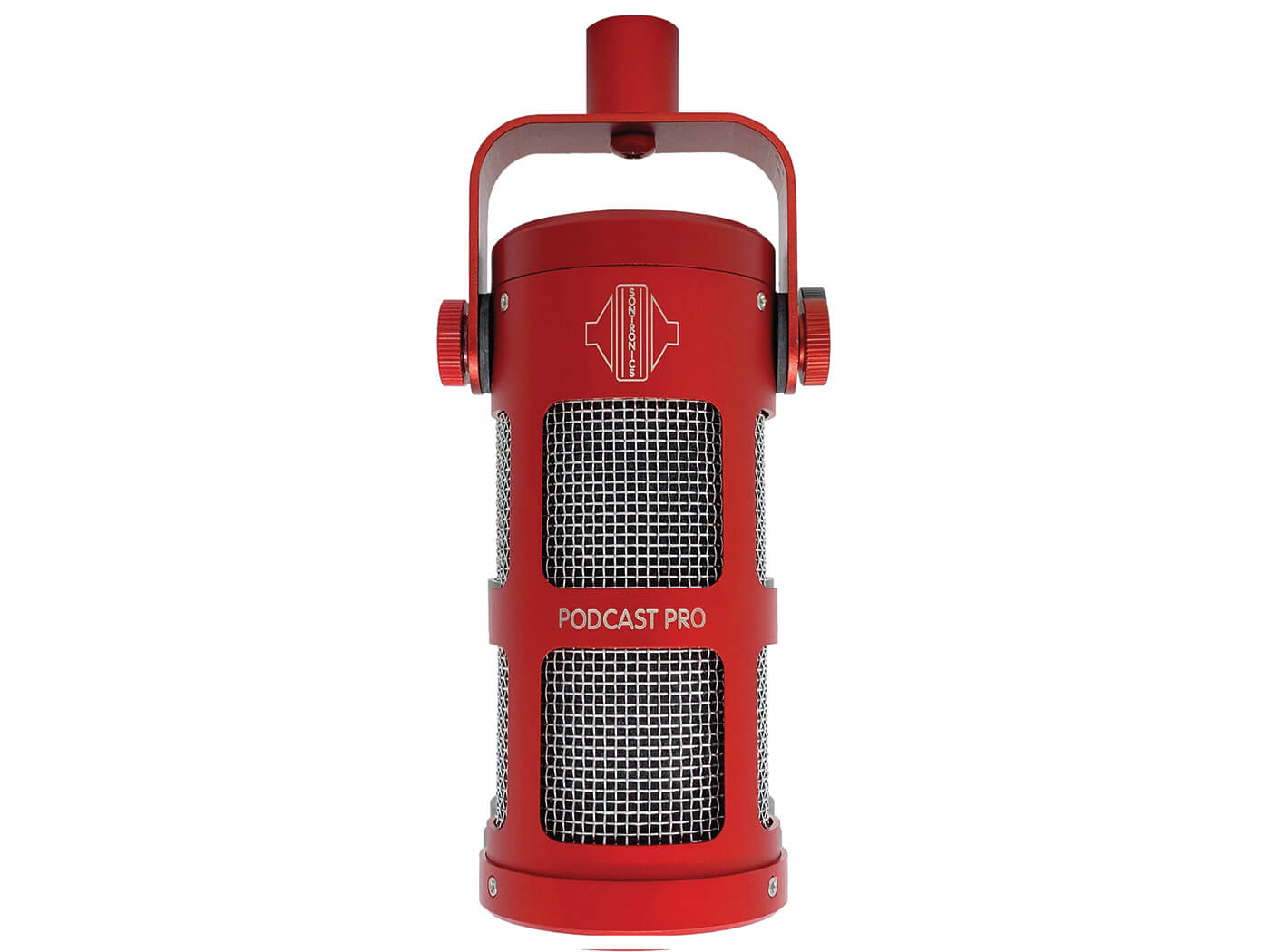
You can also connect the Podcast Pro directly to a games console via an XLR-USB cable. For Twitch streamers and the like who take video-game live-streaming seriously, there’s little doubt that the Podcast Pro provides a level of fidelity that most headset mics simply cannot replicate.
Under the grille
The microphone features a fixed supercardioid polar pattern that offers a fairly directional sound, which means you’ll experience a considerable drop-off in both volume and tonal response if you move off-axis while you’re recording.
For podcasting and voiceover recording, this is ideal, as it alleviates room noise and allows you to boost gain without raising the noise floor. Frequency response is quoted at 50Hz to 15kHz, which is once again a sensible range for voice-recording purposes. In practice, this translates to a little lost air but, then, overly clean, ultra-open sheeny vocals won’t likely be the primary concern of those recording podcasts or voiceovers. What matters more is the depth and richness of the signal in the lower-mid and treble frequencies and, in these areas, the Podcast Pro truly shines.
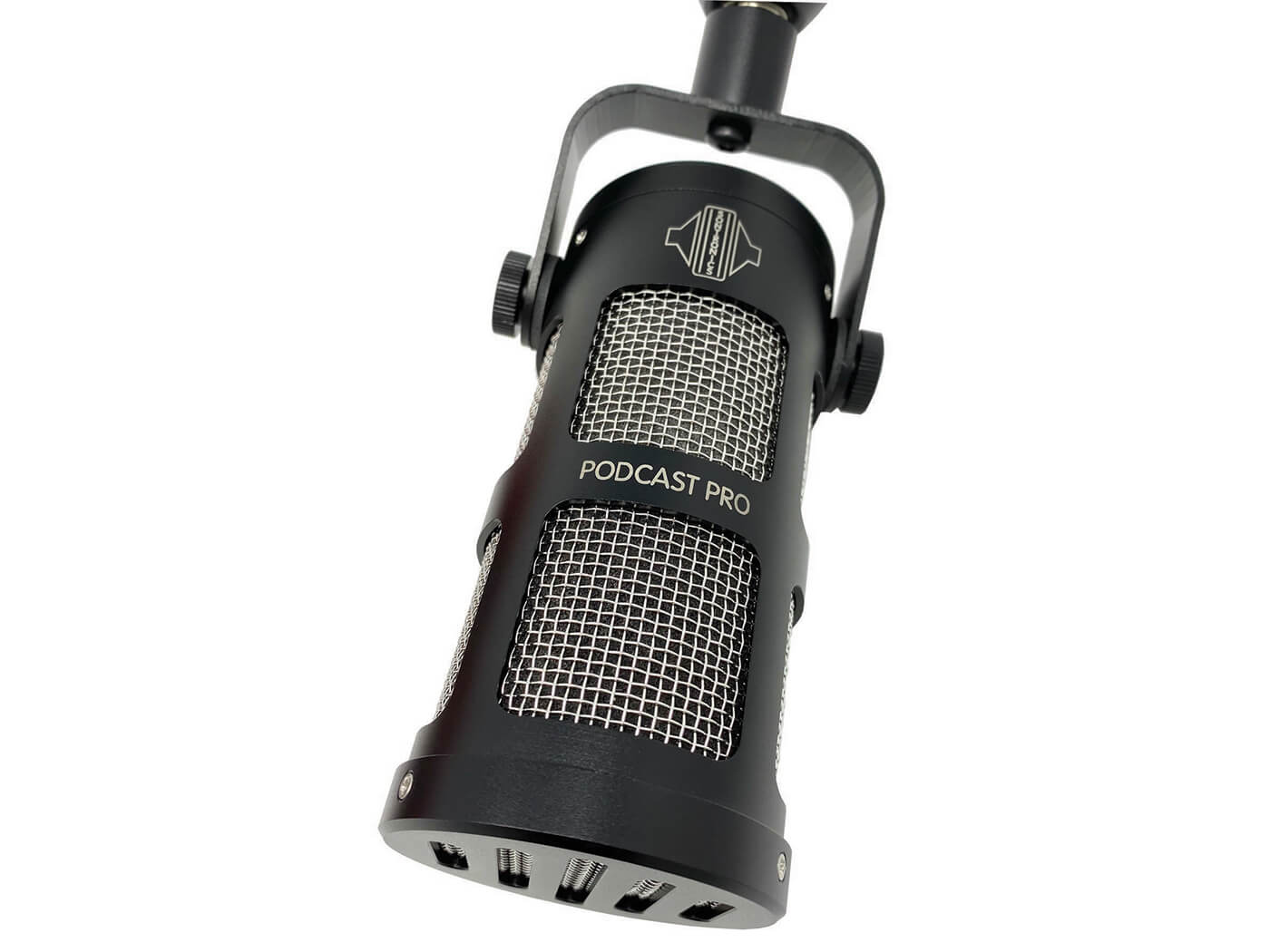
Despite the metal grilles, I’d recommend employing a pop shield when recording a voiceover. The grilles at the business end of the microphone afford some insurance against plosives but performance in this regard is notably improved through the use of a pop shield. Of course, utilising a pop shield will mean setting yourself up slightly further from the microphone but this can prove beneficial too. I find that being three inches away, with the gain cranked up a little, produces less proximity effect (and higher-quality recordings) than being closer to the mic but having lower gain.
Seriously spoken
If you’re serious about recording the spoken voice, there is much to admire in Sontronics’ latest. The Podcast Pro is a clean-sounding, no-nonsense and relatively inexpensive bit of kit that’s impressively rich in tone and capable of high-quality results in all spoken-word recording applications. It’s worth picking up a low-cost pop shield, though, to encourage further distance between your source (that’s you) and the mic, and to help manage those pesky plosive sounds. Everything else the Podcast Pro has covered.
Key features
- Dynamic microphone
- Designed for podcast, broadcast, radio, voiceover and gaming
- Focused supercardioid pick-up pattern
- Inner acoustic baffling reduces noise and sibilance
- Fitted with integrated pop filter
- Available in black or red
- Polar pattern: supercardioid
- Frequency response: 50Hz – 15kHz
- Sensitivity: -50dB ±2dB
- Impedance: ≤600 Ohms
- Connector: 3-pin XLR
- Power: phantom power not required
- Dimensions: 180 x 82 x 60mm
Alternatives
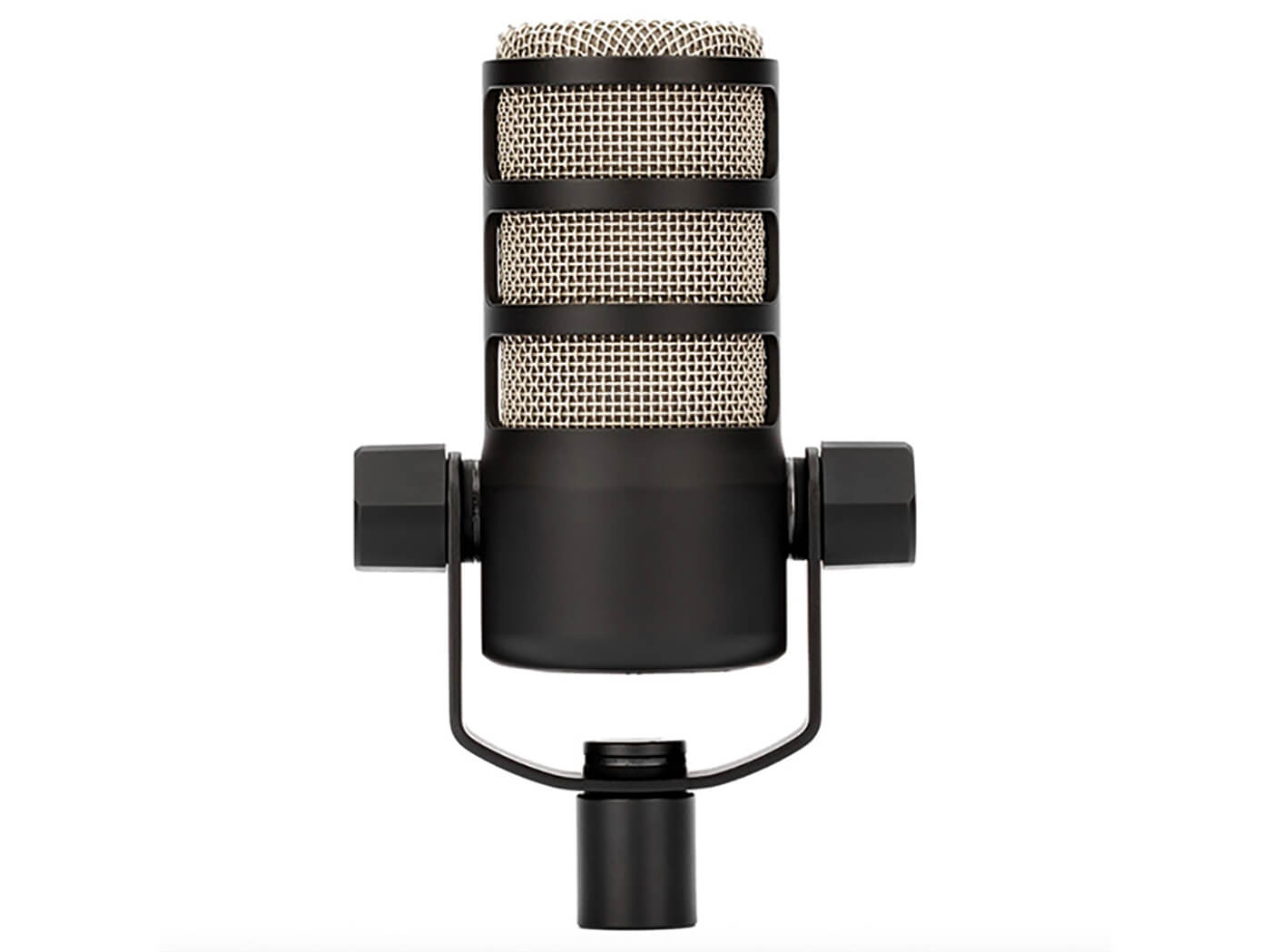
The latest podcast-ready microphone from Australia’s RØDE is optimised for use alongside the RodeCaster Pro production studio but is effective on its own too.
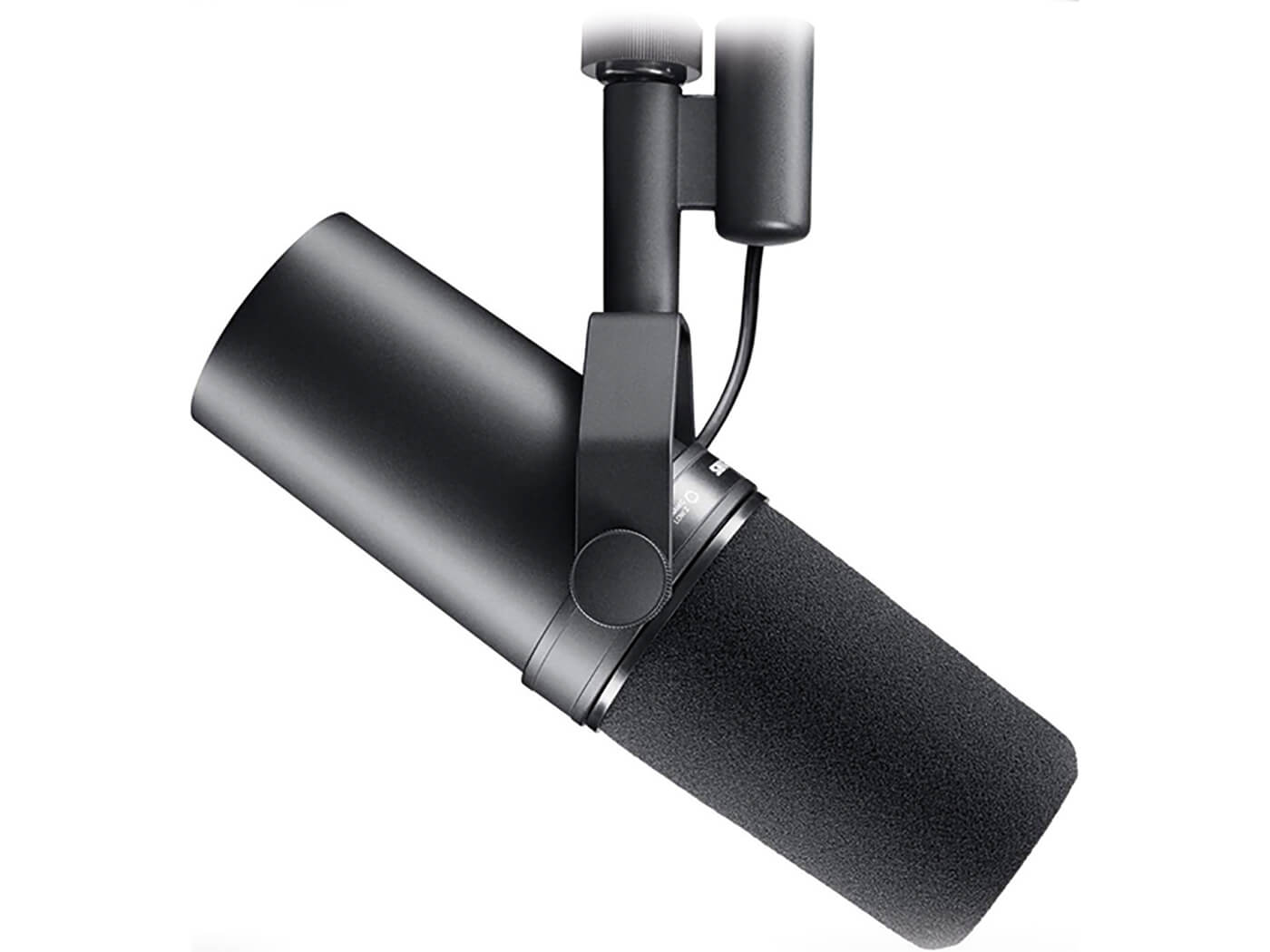
More expensive but more of an all-rounder too, the SM7B promises broadcast-quality audio. Shure has gone all-out in its construction to alleviate potential problems – the mic’s electromagnetic shielding prevents hum from nearby computers, for example.